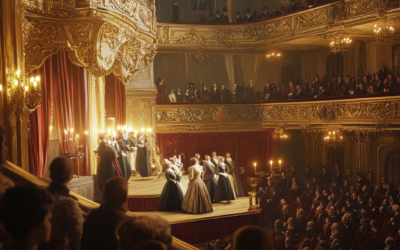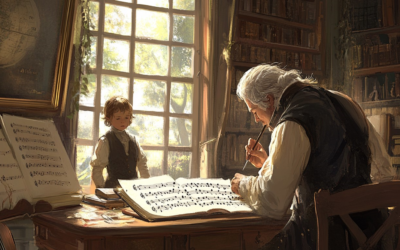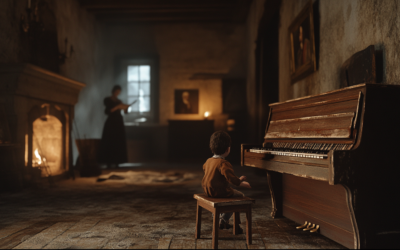Mozart's K 73A
A Mystery Wrapped in Ambiguity
The aria K 73A, listed in the Köchel catalogue as a work by Mozart, remains an enigma. With scant evidence, vague references, and no autograph to confirm its authenticity, one must wonder how such a piece earned a place in the prestigious catalog.
Mozart in Italy: The Untold Story
Was Mozart truly a solitary genius, or was he merely the instrument of his father’s ambition? “Mozart in Italy” challenges the conventional narrative, revealing a complex dynamic between father and son that shaped the course of music history. Prepare to question everything you thought you knew.
“When a name becomes a brand, the truth about its products tends to be obscured.”
Mozart in Italy
The aria “Misero tu non sei” (Wretched thou art not) is listed in the Köchel catalogue under Mozart’s name, yet little is definitively known about it. What we do know is that the text—”Misero tu non sei”—is borrowed from Metastasio’s Demetrio, a detail that leaves no room for doubt about the real author of the libretto. But the supposed composer? That’s where things get murky.
A lone reference in a letter dated January 26, 1770, where Mozart casually mentions starting the aria, offers no further clarification. Whether he was composing it for himself or copying it from his father remains entirely speculative. No manuscript has ever surfaced to authenticate Mozart’s authorship, and the aria’s precise instrumentation, key, and movements are as elusive as its origins. Yet, despite this glaring lack of solid evidence, it continues to hold its place in the official catalogue of Mozart’s works, under the designation K 73A.
Why, then, does this aria persist in being associated with Mozart? The answer likely lies not in musical innovation or compelling historical documentation, but in the strength of the mythos surrounding Mozart’s name. The absence of an autograph, the speculative nature of the evidence, and the questionable provenance should render this aria a footnote at best, yet it occupies an oddly secure spot in the annals of his supposedly vast oeuvre.
As is often the case with works attributed to Mozart, the true nature of this aria becomes less about its merit and more about its association with a figure whose name has, for centuries, been enshrined as the pinnacle of musical achievement—an association that may be more about preserving an image than accurately cataloguing historical fact. The inclusion of K 73A in the Köchel catalogue is less a testament to Mozart’s compositional prowess and more a reflection of the enduring power of Mozart’s legend, for which musical truth is often a secondary concern.
At the end of the day, Misero tu non sei may serve as yet another example of how Mozart’s name—regardless of the evidence—continues to overshadow the true origins of many pieces, a legacy built not just on music, but on myth.
You May Also Like
The Vienna Disaster
The failure of La Finta Semplice in Vienna was a turning point for the Mozart family, revealing the cracks in the facade of Wolfgang’s prodigious reputation and prompting a desperate escape to Italy in search of redemption.
From Innsbruck to Bolzano
From Innsbruck to Bolzano, the Mozart family’s journey was a blend of strategic networking and missed opportunities, revealing the challenges of securing fame in 18th-century Europe.
The Myth of Mozart’s Sight-Reading Genius
Mozart’s so-called sight-reading miracles were less about supernatural talent and more about clever improvisation, as two key 18th-century witnesses make clear.
The Hidden Legacy of Michael Haydn
Mozart’s Symphony No. 37, K.444, is more Haydn than Mozart. How did this happen? A story of deception and misattribution unfolds.
The Myth of Mozart’s Education
For centuries, Wolfgang Amadeus Mozart has been celebrated as a musical prodigy, effortlessly composing masterpieces from a young age. However, when we peel back the layers of myth surrounding his early education, a different picture emerges—one in which his father, Leopold Mozart, plays a far more controlling and influential role than is often acknowledged. This article explores the true nature of Mozart’s education, examining how much of his early works can be attributed to his own genius, and how much was the product of his father’s meticulous and often self-serving guidance. Was Wolfgang’s brilliance entirely his own, or was it a crafted image designed by Leopold?
The Myth of Mozart’s Childhood
Mozart’s childhood is often romanticised, but behind the myth lies a more complex reality. This post explores the hidden dynamics within his family, questioning the traditional narrative of Mozart's early years and shedding light on the forgotten role of his sister,...







